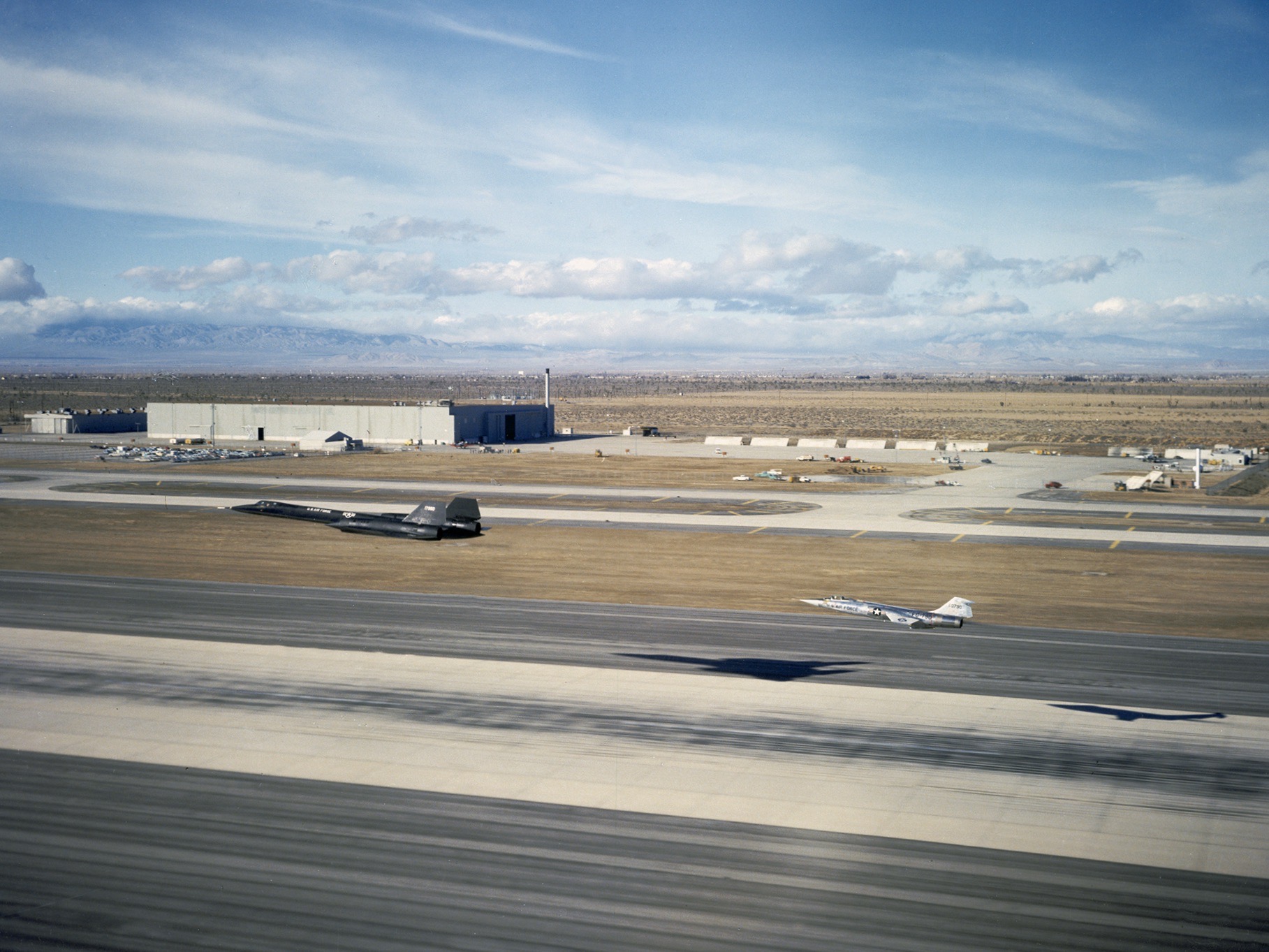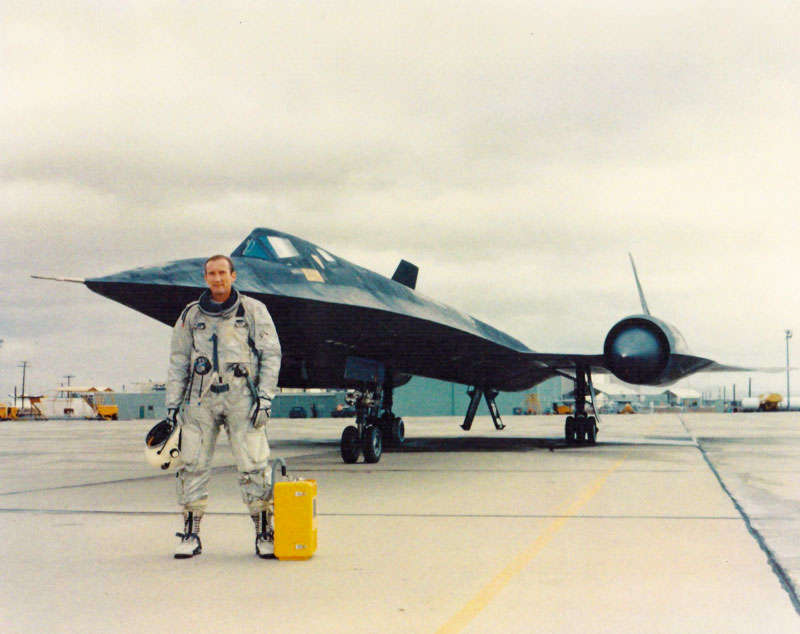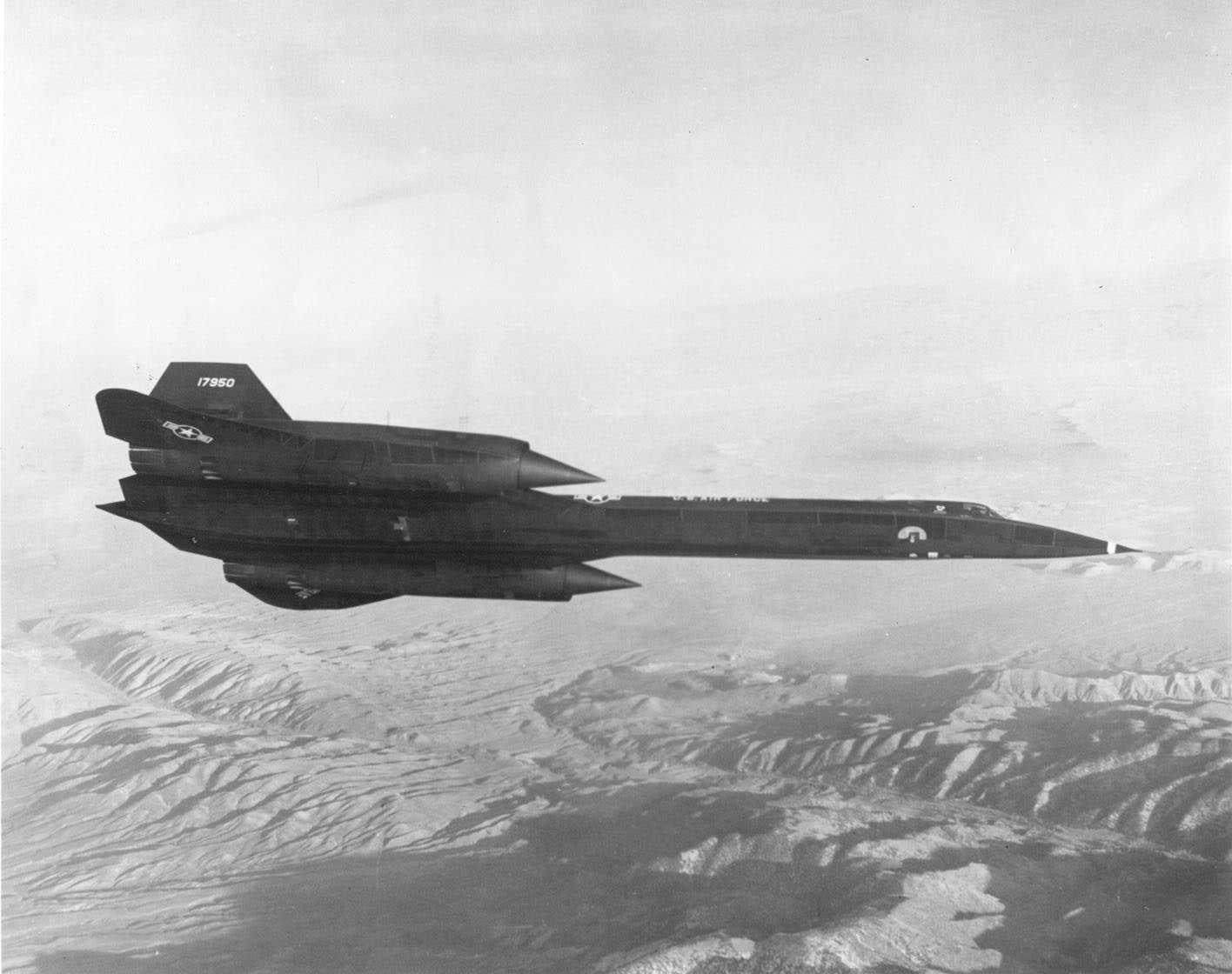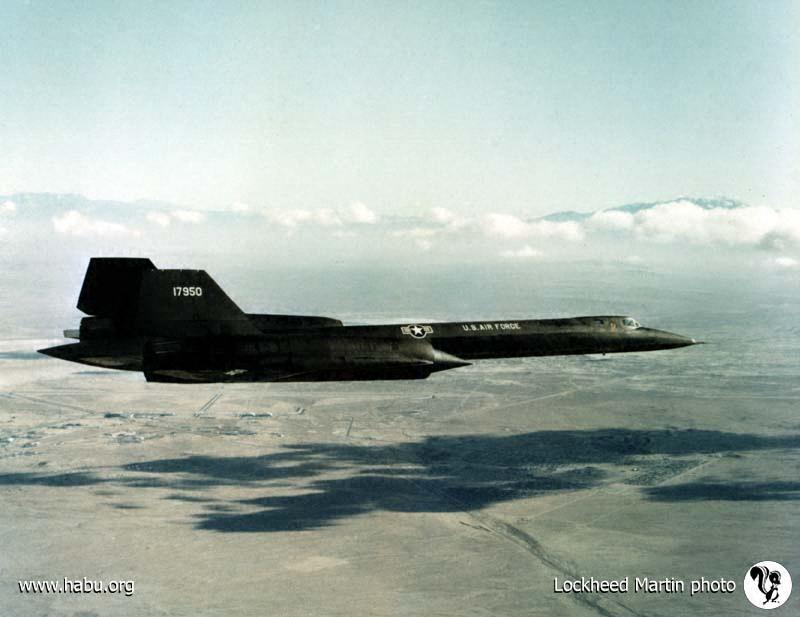
22 December 1964: Lockheed test pilot Robert J. “Bob” Gilliland made a solo first flight of the first SR-71A, 61-7950, at Air Force Plant 42, Palmdale, California. The “Blackbird” flew higher than 45,000 feet (13,716 meters) and more than 1,000 miles per hour (1,609 kilometers per hour) before landing at Edwards Air Force Base, 22 miles (35 kilometers) northeast, to begin the flight test program.
Bob Gilliland made the first flight of many of the Lockheed SR-71s. It is reported that he has logged more flight time in excess of Mach 3 than any other pilot.

The SR-71A Blackbird is a Mach 3+ strategic reconnaissance aircraft designed and built by Lockheed’s famous (but Top Secret) “Skunk Works” for the United States Air Force. It was developed from the Central Intelligence Agency’s A-12 Oxcart program.
The SR-71A is a two-place aircraft, operated by a Pilot and a Reconnaissance Systems Officer (“RSO”). It uses electronic and optical sensors. The fuselage has a somewhat flattened aspect with chines leading forward from the wings to the nose. The wings are a modified delta, with integral engine nacelles. Two vertical stabilizers are mounted at the aft end of the engine nacelles and cant inward toward the aircraft centerline.
The SR-71A is 107 feet, 5 inches (32.741 meters) long with a wingspan of 55 feet, 7 inches (16.942 meters), and overall height of 18 feet, 6 inches (5.639 meters). Its empty weight is 67,500 pounds (30,620 kilograms) and maximum takeoff weight is 172,000 pounds (78,020 kilograms).

The Blackbird is powered by two Pratt & Whitney JT11D-20 (J58-P-4) turbo-ramjet engines, rated at 25,000 pounds of thrust (111.21 kilonewtons) and 34,000 pounds of thrust (151.24 kilonewtons) with afterburner. The exhaust gas temperature is approximately 3,400 °F. (1,870 °C.). The J58 is a single-spool, axial-flow engine which uses a 9-stage compressor section and 2-stage turbine. The J58 is 17 feet, 10 inches (7.436 meters) long and 4 feet, 9 inches (1.448 meters) in diameter. It weighs approximately 6,000 pounds (2,722 kilograms).
The SR-71A has a maximum speed of Mach 3.3 at 80,000 feet (24,384 meters)—2,199 miles per hour (3,539 kilometers per hour). Its maximum rate of climb is 11,810 feet per minute (60 meters per second), and the service ceiling is 85,000 feet (25,908 meters). The Blackbird’s maximum unrefueled range is 3,680 miles (5,925 kilometers).
Lockheed built 32 SR-71As. They entered service with the 4200th Strategic Reconnaissance Wing (later redesignated the 9th SRW) in 1966 and were initially retired in 1989. Several were reactivated in 1995, but finally retired in 1999.

© 2016, Bryan R. Swopes
What a Fantastic Aircraft!!!! I don’t think I’ve ever seen one more beautiful in flight …. Except for one of God’s creature!! She should still be flying!!! Maybe she is and we don’t know it!! 🙂 I met one of her pilots at Beal AFB and he said she was Yar!!! I also met a couple of U-2 Pilots there and they called true U-2 a “Leaky old Bucket” !! LOL BOL
My favorite aircraft, without a doubt. I’ve seen a couple on static display, and have some great photos of the Blackbird sitting at Lackland AFB.
I had the pleasure of seeing one landing at Plattsburgh AFB one night when I was on duty in 1972. It came in, went to the Alert hangar, and streaked off in a steep ascent a couple hours later…I’ll never forget the orange glow of the afterburners.
I’ve never seen one fly. That must have been a thrill!
My good friend Bob Gilliland did not make the first flight on every new SR-71 produced. He made many as did Bill Weaver and Jim Eastham. I know as I was in the back seat of most of those flights up through number 18. George ‘Zip’ Andre, Mach 3+ #16 or #23 depending on which list.
Also, on this day, just outside the famous picture, I am chasing down the runway behind Bob in a pickup truck as a safety ground chase watching for any problems. In doing so, I inadvertently wipe out two runway edge lights.
Well. . . um. . . These things happen. 🙂
I stand corrected. Thank you, George. And thanks very much for visiting “This Day in Aviation.”
“Bob Gilliland ….has logged more flight time in excess of Mach 3 than any other pilot.”
And to relax in his spare time and keep his skills sharp, he flies another tandem aircraft, a 65hp Piper*
I have read of pilots who fly military aircraft doing this.
*perhaps not Bob in reality 🙂
My first contact with an SR-71 was at kadena Air Force Base, Japan in 1971. I was taxiing my F4 to a parking place after landing. The SR-71 was still top secret then. I said to my backseater, “I don’t see that SR-71 at 9 o’clock, do you?” He said, “I don’t see it either.”
I was two years old living in Base housing when my Dad was stationed there, it was cool growing up on that base back then got to see a lot. Very cool article
I saw 1 land at Cubi Point Subic Bay Philippines in 1982 it had to sit on the runway to cool down. Then the next day got to see it take off it was gone in seconds once it got in the air.
Went to a Wednesday air show at Beale Air Force base. I think there were 8 or so 71’s there. We were driving thru the gate when the 71 took off. Burners lit. They then had a U2 demo and landing with a Mustang chasing to give altitude instructions to the pilot. Right after that, the 71 flew over at excess of speed of sound. Sent sonic booms off. Was awesome. Then came in for a landing. Gear down, landing lights on. 10 ft from the ground, gear up, lights off and full burners. Still give me chills. One of my best days ever….
I got super lucky, and got to see a Blackbird make several low passes at an airshow in Oxnard, CA. at NAS MAGU in the late 80s. It was truly epic, a word I don’t use capriciously. Like a visitor from the future, even though the aircraft was over 20 years in service at the time. The airshow announcer told us it was coming, and the large crowd went dead silent, even the sound of it was otherworldly as it passed, then swiftly climbed and vanished.